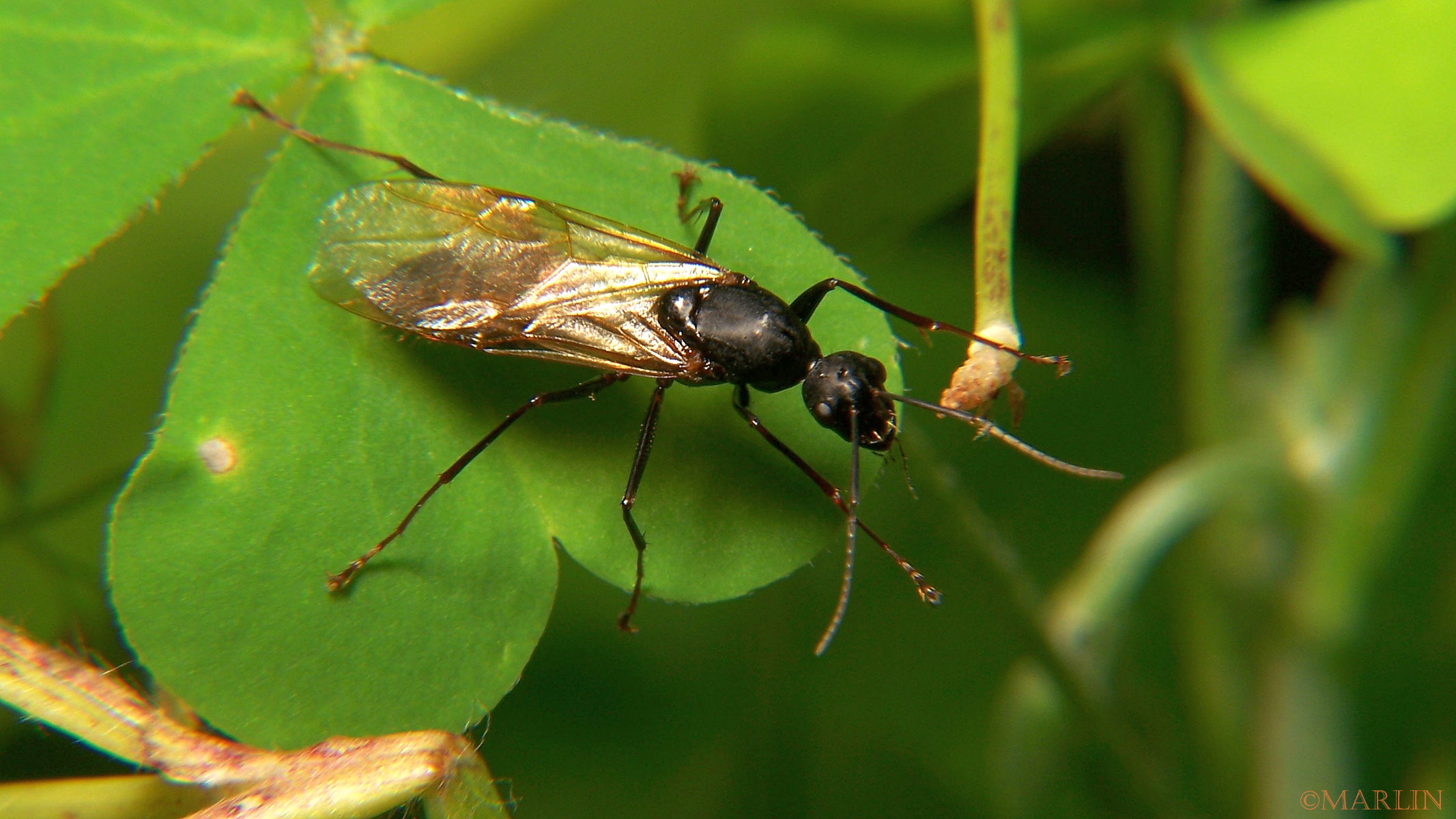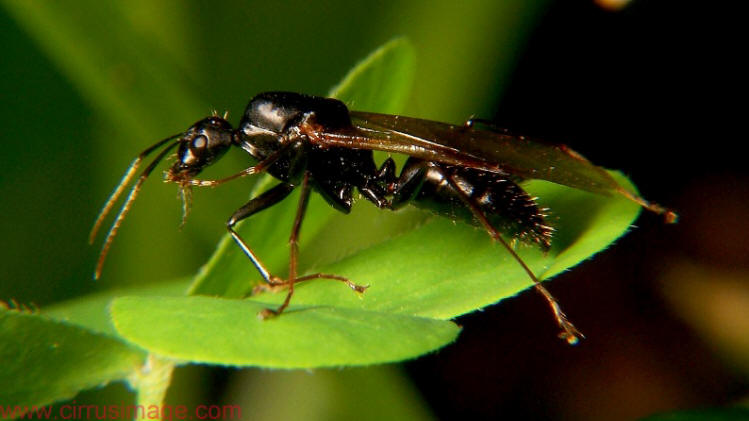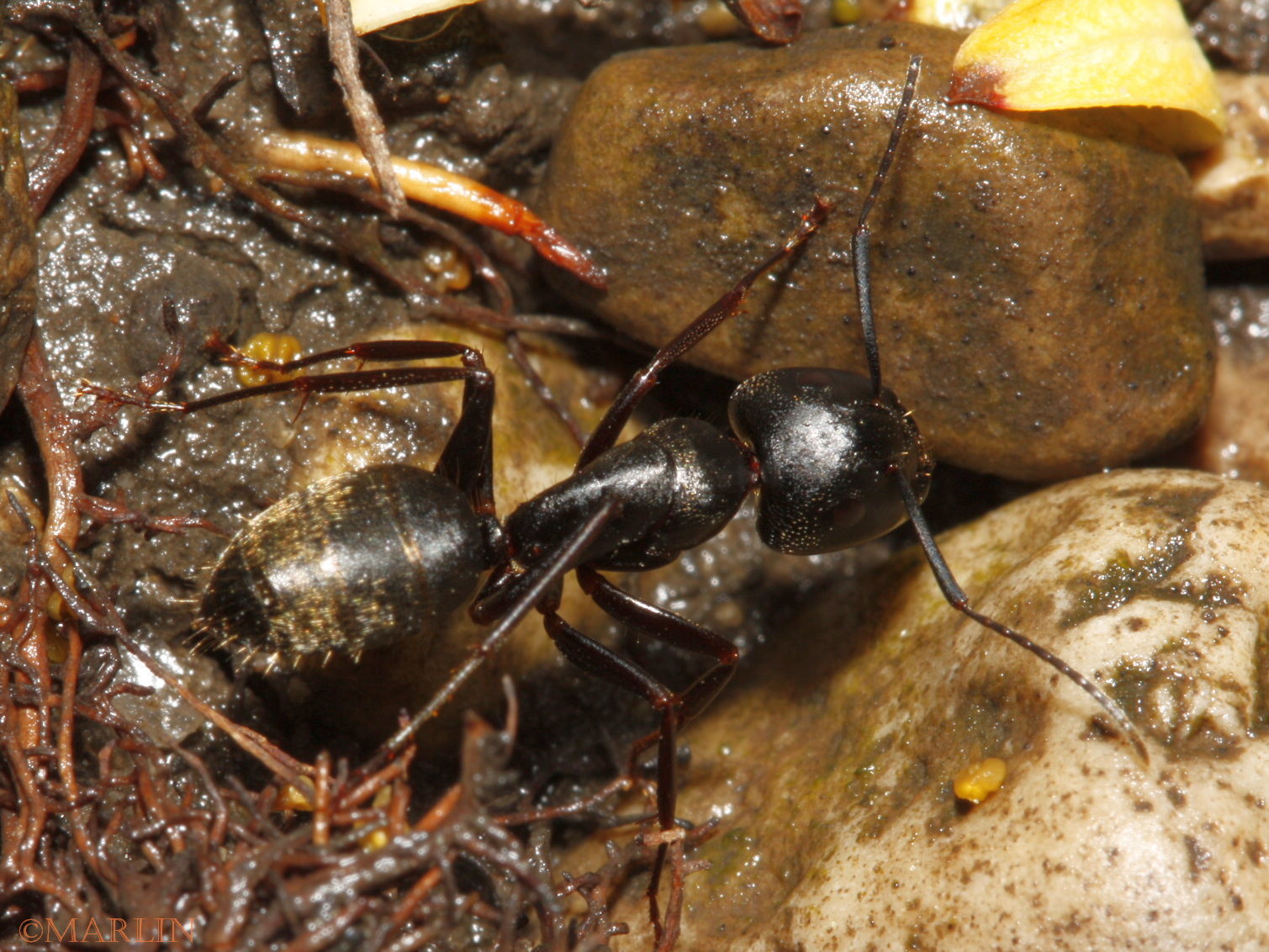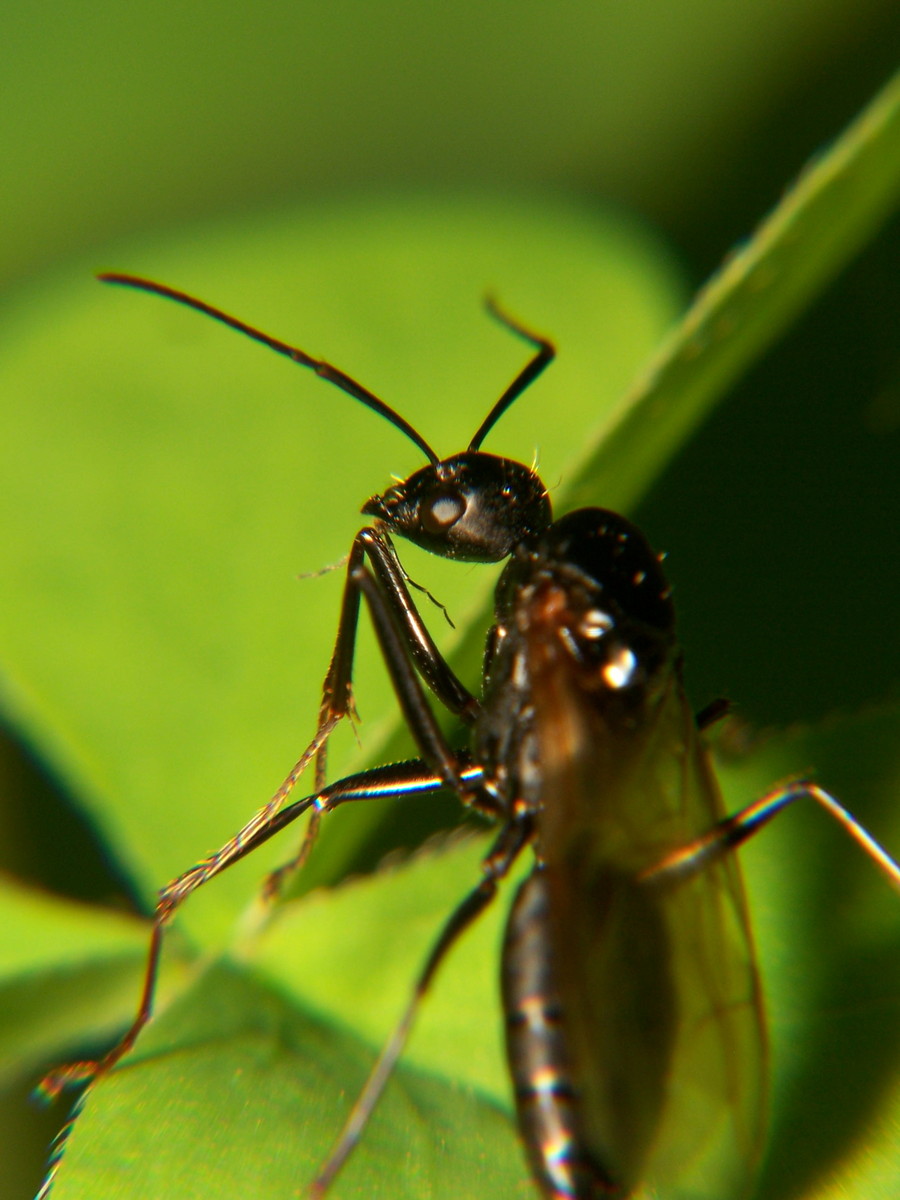Carpenter Ants – Camponotus pennsylvanicus

Winged Carpenter Ant Drone (male royalty)
Black carpenter ants are probably the largest ants most people in North America ever see. The workers (sterile females) range upwards of 1/2 inch long, quite a sight, indeed, especially if one suspects a dwelling may be infested. The winged queens, usually only seen when the colony is swarming, can be nearly 1 inch long. The winged drone pictured here is about 1/2″ long. This ant was found in a woods, and was on his last legs, having previously fulfilled his purpose by mating with one or more queens part of that colony’s swarm. Drones die quickly after mating, being of no further use to the colony.
Carpenter ants do not actually eat or digest wood, as do the termites, but they can weaken structures by tunneling inside the wooden studs or joists. Their tunnels and galleries are most often found in moist or rotten wood, generally in the vicinity of a leaking water pipe, or roof leak, but can also be found in perfectly dry wood. Small piles of sawdust-like material can sometimes be seen nearby, where the ants have pushed the chewed wood particles outside the nest. A qualified pest control agency can usually diagnose an infestation by careful observation, including listening for the ants’ tunneling and communication noises with a stethoscope. The ants produce a crackling, rustling sound like the crinkling of cellophane, especially if the colony has been disturbed.
Careful note should be made, also, of the number and frequency of sighting the workers. Carpenter ants do also live in the wild , and carpenter ant strays may come indoors while hunting for food, or might be spotted outside an unaffected dwelling. Workers are known to forage for food as far as 100 yards from their nest. Workers are most active at night, traveling from their nest to a food source following pheromone trails laid down by scout ants or previous foragers.
Prevention: Homeowners should trim all trees and bushes so branches do not come in contact with the house. Moisture problems such as leaking roofs, leaking chimney flashing, or plumbing, poorly ventilated attics or crawl spaces and blocked gutters or downspouts should be corrected. Replace rotted or water-damaged wood and eliminate wood to soil contact. Remove dead stumps within 50 feet of the house, if practical, and repair trees with damaged or broken limbs. Seal cracks and crevices in the foundation, especially where utility pipes or wiring enter from outdoors. Be sure to store firewood off the ground away from the house and bring indoors only wood for immediate use. Consider non-organic mulches near the house in heavily infested ant areas. High moisture conditions must be eliminated to help control carpenter ants.
Carpenter ants may establish nests in a number of different locations. It is important to realize that these locations can be either inside or outside the structure. Carpenter ants actually construct two different kinds of nests: parent colonies which, when mature, contain an egg-laying queen, brood and 2000 or more worker ants, and satellite colonies which may have large numbers of worker ants but no queen, eggs or young larvae. The carpenter ants inside a home may have originated from the parent colony or from one or more satellite nests. For example, the ants may be coming from the parent nest located outdoors in a tree stump, landscape timber or woodpile, or from one or more satellite nests hidden behind a wall in the kitchen or bathroom, or perhaps from wood dampened by a roof leak in the attic.
The extent and potential damage to a home depends on how many nests are actually present within the structure, and how long the infestation has been active. Although large carpenter ant colonies are capable of causing structural damage, the damage is not normally as serious as that from termites. In some cases, the damage may be relatively insignificant, but this can only be determined by locating and exposing the nest area.
Many times, it will be impossible for the homeowner to locate and / or destroy carpenter ant colonies on their property or inside their homes. Pest control companies (what we used to call “exterminators” in a simpler time) take different approaches to eliminating the problem. Some companies expend great energy locating specific nesting sites, and treating only that area. Others take more of a shotgun approach, drilling into walls at various locations and injecting insecticides in hopes of catching any possible nests that may be otherwise missed.

See also: American Carpenter Ant – Camponotus americanus
Bees & Wasps & Ants Index | Bees & Wasps Main



